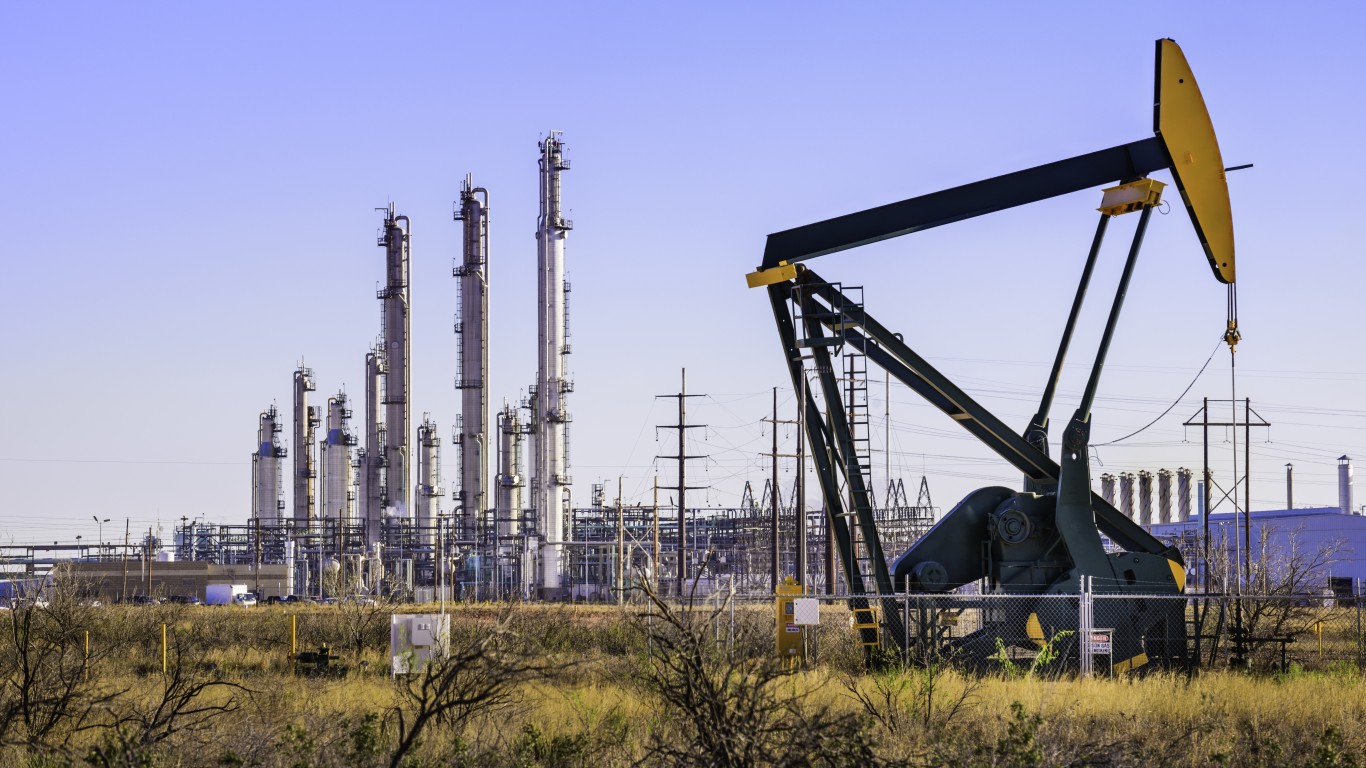Energy
Why Energy ETFs and Energy Leaders Are Finally Shining Again in 2019

Published:
Last Updated:

It is important to understand that the stock market really is a market full of stocks. Index weightings change over time, and many sectors and their underlying stocks outperform or underperform the broader market indexes handily over time. One sector that had been a perpetual underperformer of the great bull market has been the energy sector.
It’s easy to point a finger at energy companies sometimes. The oil and gas leaders tend to trade as a group, and if they win from higher energy prices many consumers have sacrifice spending on non-energy spending. That’s one theory at least.
One issue that has been a continued weight around the sector is that some funds and some investors have started to turn their back completely on fossil fuels and energy that is not considered to be renewable or cleaner than gasoline and the like.
The Dow Jones industrials were last seen up 11% so far in 2019 and up about 4% from a year ago. The S&P 500 was up even more so far in 2019, with a gain of 13%, but that’s about 3% higher than this time last year.
In the theory that a rising tide lifts all ships, energy is outperforming the broader market at this time, with year-to-date gains of 15.5% in the Energy Select Sector SPDR ETF (NYSEARCA: XLE). And despite the outperformance of 2019, it is still down almost 2% from a year ago.
The exchange traded fund is the largest of the major oil and gas ones. With shares at $66.50 on Wednesday, it has a 52-week range of $53.36 to $79.42. Over the past five years, it has a broader range of just under $56 with a high of $100.
Crude oil has been a boom and a bust for energy stocks. Oil has risen from $46 per barrel at the end of 2018 to almost $60 per barrel on last look. It was also up at $75 at the start of October, before the market meltdown hurt every equity.
More energy ETFs are looking strong as well. The ProShares Ultra Oil & Gas (NYSEARCA: DIG) ETF is up a sharp 33% so far in 2019 alone, and that’s still down almost 9% from a year ago.
The Alerian MLP ETF (NYSEARCA: AMLP) is the largest of the ETFs tracking master limited partnerships (MLPs), and it is up 15% so far in 2019 but up just about 2% from a year earlier. At $10.12, it is back above $10 and has a 52-week range of $8.27 to $11.41. Its last dividend gave it a current 7.7% dividend yield, but that payout changes as the underlying MLPs see payout changes.
There is a smaller ETF in the MLP sector, the InfraCap MLP ETF (NYSEARCA: AMZA). A Finviz screen showed that it was up 21% so far in 2019 but still down over 17% from a year ago.
In the oilfield services sector, there is the VanEck Vectors Oil Services ETF (NYSEARCA: OIH). Its shares were back up at $17.55, after hitting a 52-week low and multiyear low of $13.13. Its 52-week high is $29.87 — just to show how ugly that group was doing. Its gain of 24% so far in 2019 is much stronger than most energy ETFs, but it is also still down about 28% from this time a year ago.
The Vanguard Energy ETF (NYSEARCA: VDE) was seen up almost 17% so far in 2019, but it was still down over 2% from this time last year.
The SPDR S&P Oil & Gas Exploration & Production ETF (NYSEARCA: XOP) was last seen up almost 14% so far in 2019, and that is still down 12% from a year ago.
And the iShares Global Energy ETF (NYSEARCA: IXC) was last seen up 16% so far in 2019, and up just 1% from a year ago.
It’s never a good strategy to just chase performance for the sake of chasing today’s and yesterday’s winners. That said, there has been some rekindled interest in the oil and gas leaders of late and this sort of buying requires major institutional buying of the shares to see gains of this sort.
Just don’t keep your eye off of the price of oil. These gains are happening while the commodity is at the highest price since last November.
To look at the major movers inside the top energy ETFs and funds, here are the gains seen by some of the top energy sector leaders:
If you’re one of the over 4 Million Americans set to retire this year, you may want to pay attention.
Finding a financial advisor who puts your interest first can be the difference between a rich retirement and barely getting by, and today it’s easier than ever. SmartAsset’s free tool matches you with up to three fiduciary financial advisors that serve your area in minutes. Each advisor has been carefully vetted, and must act in your best interests. Start your search now.
Don’t waste another minute; get started right here and help your retirement dreams become a retirement reality.
Thank you for reading! Have some feedback for us?
Contact the 24/7 Wall St. editorial team.